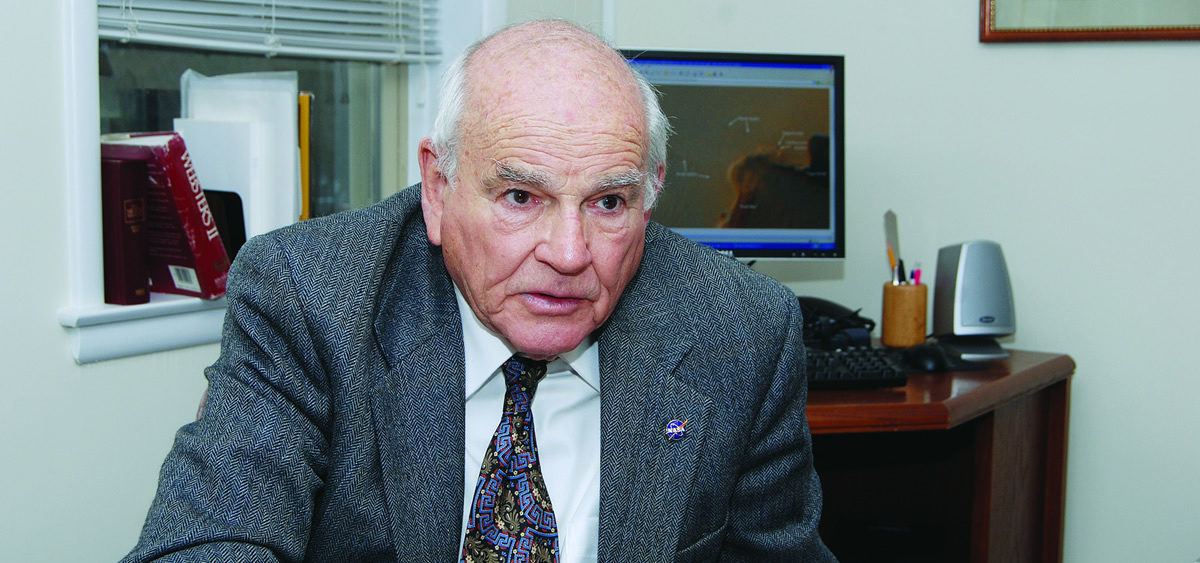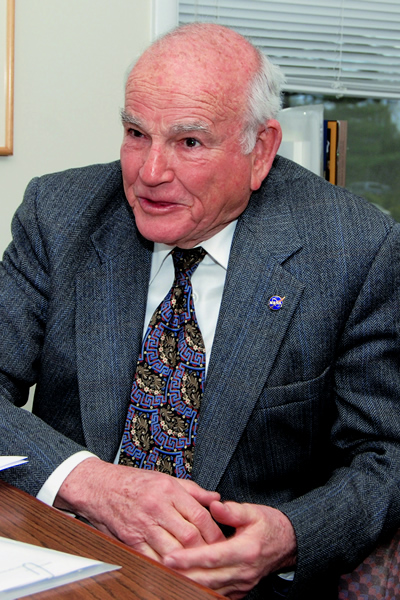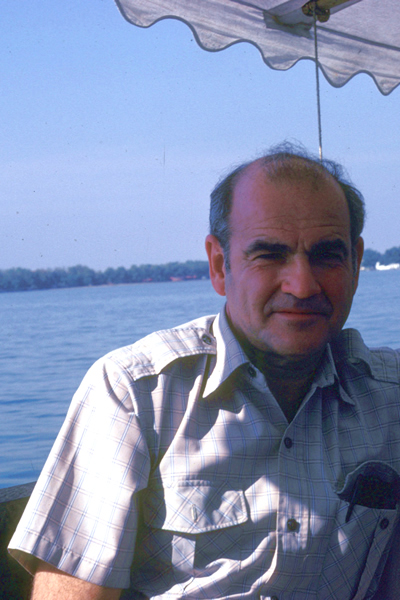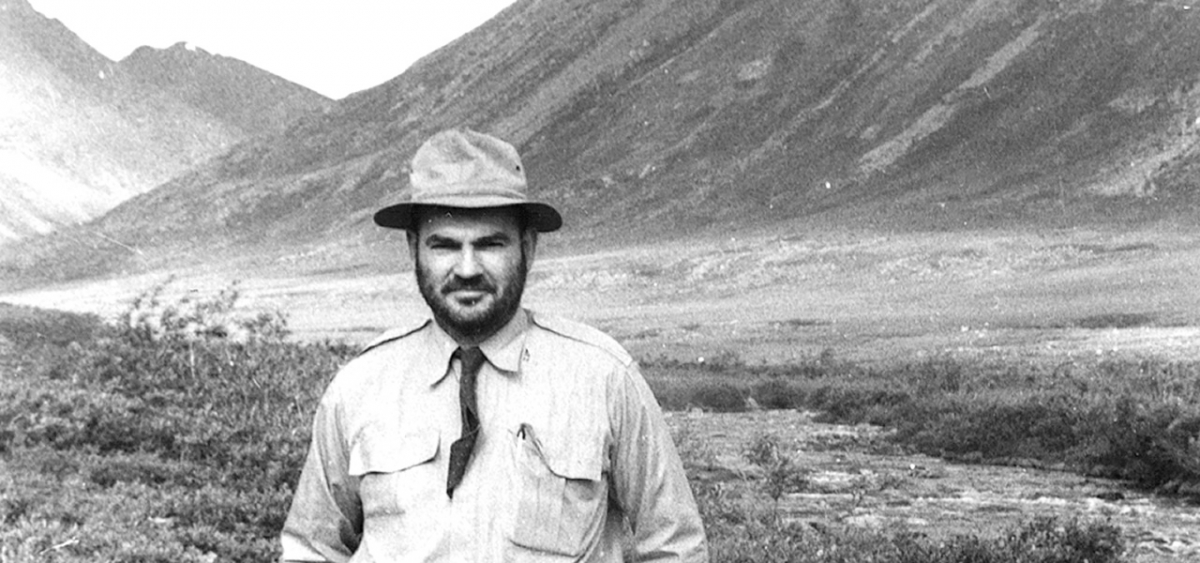
‘Fishing Expedition’ Led to Nobel Prize
-
A Conversation with Baruch S. Blumberg
Greg Lester
Originally published in Forward, Spring 2009
Baruch S. Blumberg, PhD (2009)
Fox Chase’s Baruch S. Blumberg was awarded the Nobel Prize in medicine in 1976 for his work in discovering the hepatitis B virus, the leading cause of liver cancer.He subsequently invented a vaccine against the disease—effectively, the first cancer vaccine—that has become one of the most widely used in the world, with billions of doses administered.
Here, Dr. Blumberg describes the path that led to his groundbreaking discovery.
You were trained as a physician. How did you make the jump to research?
Even before entering medical school, I had a strong inclination, based in large part on my father’s suggestion, that I would enter research. In 1955, after four years of medical training at Bellevue Hospital and the Presbyterian Hospital of Columbia University, I decided to get into laboratory work. I went to Balliol College at the University of Oxford to earn a doctorate in biochemistry. That was where I became interested in inherited biochemical variation.My colleagues and I began taking field trips and doing studies on human blood specimens. This was be- fore we had the tools to study genes— well before the Human Genome Project—so we studied blood serum proteins, looking for small differences and determining which were genetically influenced. We were getting an idea of the distribution of these traits among different populations and how the environment of each might have had an effect. Over the years, we crossed the globe. One year we’d visit a remote Arctic village, the next Africa or an island in the Pacific.
Why were you interested in these genetic variations?
I was always interested in why some people get sick and others don’t. It is a basic question in medicine—perhaps the basic question. As a physician, you see someone lying in bed and think, “Why is he or she there and I’m not, even though we’ve had the same kind of exposure?” The plan was to look at each inherited difference in a protein, then figure out which disease it was related to. Sometimes such things are prejoratively called “fishing expeditions,” but that’s exactly what we wanted to do. We were trained medically and in laboratory research; in the field, we became more familiar with the back- ground disease patterns.You came to Fox Chase in 1964. What drew you here?
The approach here was to do basic science—to understand cells and genetics at a basic scientific level. I thought that was the way to go forward in understanding the basis of disease, and I still do. Our study of genetic variation was a basic science question, with the expectation that applications would come in time.Did you set out to find hepatitis B?
We did not, but you can’t say that it was accidental, either. We didn’t know what we would find, but we knew we’d find something. Very often, when people tell the story, they recast it as if finding hepatitis B was the original intention. That wasn’t our story.“We didn’t know what we’d find, but we knew we’d find something.”
How did the hepatitis discovery come about?
We began to look for proteins that differed from each other in an antigenic sense, or how they elicited an immune response. The notion was that, if someone received many blood transfusions, they would be exposed to variants of proteins they hadn’t inherited. If those transfused proteins were antigenic, you’d find an antibody in the patient. We would then use that antibody to look for the antigen in the blood of people we’d sampled. Nobody had thought of using that technique, as far as we knew. We found, in a hemophilia patient, an antibody against what we would later learn was the surface antigen of hepatitis B virus. We found the antigen in a number of samples we collected, including that of an Australian, so we called it the Australia antigen and, for half a year or so, we didn’t know what it was.
Field research, Africa. Did you have any idea that it was hepatitis B?
Even early on, we had some idea it was hepatitis. We knew that people who had transfusions got hepatitis, so we had an inkling. Within a short time, a few epi sodes increased our suspicions. For example, we were studying Down syndrome patients, who had a prevalence of hepatitis B, and found that many also had the Australia antigen. That led to our first publication identifying hepatitis B in 1967. In 1969, Fox Chase filed the patent for the vaccine, with Irving Millman and me as co-inventors; it was granted a few years later. The vaccine was made by extracting the antigen from the blood of carriers and treating it to kill any live viruses. Nobody has made a vaccine like that before or since.Did you know you were making a cancer vaccine?
We suspected, but there wasn’t sufficient supporting data. There had been studies in West Africa, primarily, linking liver cancer to underlying liver disease—cirrhosis—that was thought to be caused by hepatitis. We also published stud- ies in the ’60s linking liver cancer and the Australia antigen, but they were not conclusive.
Dr. Blumberg in Africa Have you thought about how many lives your research has saved?
People have made calculations, and the numbers are in the millions. Of course, the impact is hard to appreciate. One of the problems with preventative medicine is that, if it works, nothing happens.

